Will you Make a Difference?
Katarzyna Wiącek and Katarzyna Łaziuk, Poland
Katarzyna Wiącek is a teacher at Zespół Szkół Ekonomicznych in Mińsk Mazowiecki, Poland. Her current interests include student motivation, exam preparation and literature (both for using in the classroom and reading for pleasure). E-mail: k.wiacek@zsemm.edu.pl
Katarzyna Łaziuk is a teacher at Gimnazjum i Liceum Ogólnokształcące in Mińsk Mazowiecki, Poland. Her current interests include teaching tolerance, critical thinking. She hopes to instill open-mindedness in her students. E-mail: kasia.laziuk@gmail.com
Menu
Introduction
Procedure
Activities
Teacher’s notes
References
Time: 45 min
Level: B1/B2
Methods: discussion, pair work, brainstorming
Materials: worksheets, markers, pictures, post-it-notes
Aims:
- to understand the importance of learning about the past
- to commemorate heroes who fought for our freedom
- to encourage SS to take action
- to recall the history of Veteran’s Day
- Tips for teachers: T decides which introduction to use.
- T shows SS a picture of a poppy and asks SS if they have any connotations of the flower. Students receive the copy of the poem (In Flanders Fields by John McCrae), they read it in silence, then T reads out the poem and the class discusses its meaning. T informs about the origin of the poem.
- T shows SS different photos showing ceremonies taking place all over the world to commemorate those who fought in different wars. T asks SS if they associate the photos with the events they commemorate. If SS have any problems T may write down the names of events.
- SS read short article about Veteran’s Day and complete it with the given words. T checks students’ answers.
- SS work in pairs and answer the following questions:
In what ways can one promote peace?
Is it important to commemorate historical events and people who took part in them?
How can you show respect to your country?
How can you promote peace?
How can being tolerant promote peace?
What does it mean to be a patriot?
- After a few minutes SS present their opinions to the whole class, T initiates discussion.
- SS write on post it notes their ideas, comments on how they can promote peace/ how they can make a difference in the contemporary world. SS put their ideas on the board and build a symbolic Wall of the Concerned
- T sets homework, SS can choose one of the following tasks:
- Create a symbol / make a poster which would commemorate those who have fought for freedom.
- Answer the following question:
What can teenagers do to improve peace conditions in the world?
Poem for 1a
In Flanders Fields by John McCrae
In Flanders Fields the poppies blow
Between the crosses row on row,
That mark our place; and in the sky
The larks, still bravely singing, fly
Scarce heard amid the guns below.
We are the Dead. Short days ago
We lived, felt dawn, saw sunset glow,
Loved and were loved, and now we lie
In Flanders fields.
Take up our quarrel with the foe:
To you from failing hands we throw
The torch; be yours to hold it high.
If ye break faith with us who die
We shall not sleep, though poppies grow
In Flanders fields.
Glossary
Lark – a kind of bird
Dawn - sunrise
Glow – to shine
Scarce – rare
Amid – among
Foe – enemy
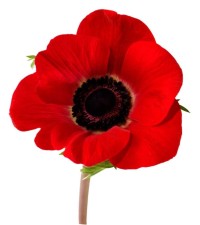
Pictures for Stage 1b of the lesson
Warsaw Rising 1944
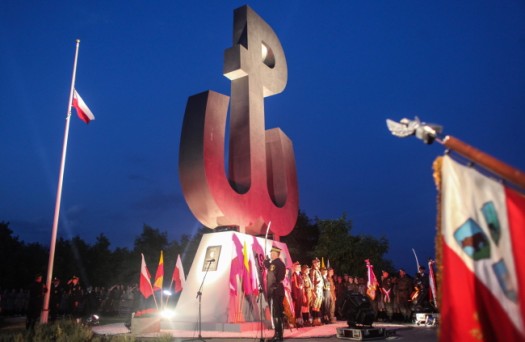
Warsaw Ghetto Uprising 1943
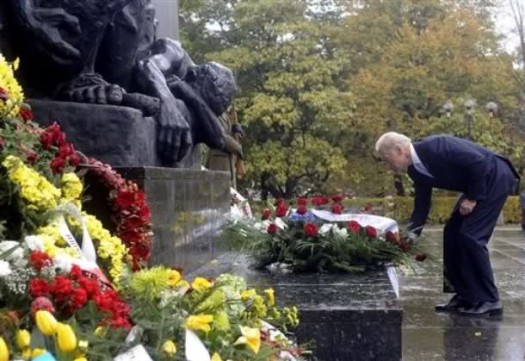
World War I
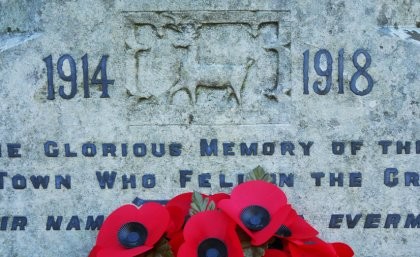
Rwanda’s genocide 1994
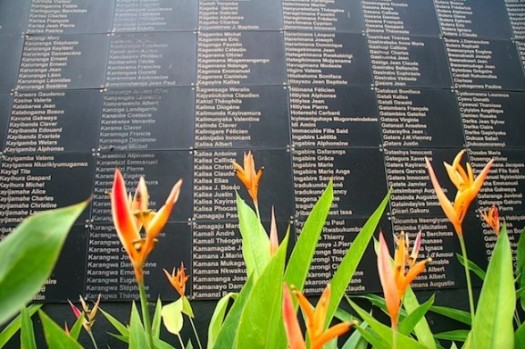
Task for stage 2
Complete the text with the correct words.
peace, served, passed, significant, signed, honor, change, loyal, national, date
Veterans Day
In 1947, Raymond Weeks, of Birmingham Ala., organized a "Veterans Day" parade on November 11th to ……………. all of America's veterans for their ……………… and dedicated service. Shortly thereafter, Congressman Edward H. Rees (Kansas) introduced legislation to ……………. the name of Armistice Day to Veterans Day in order to honor all veterans who have ……………. the United States in all wars.
In 1954, President Eisenhower ……………. a bill proclaiming November 11 as Veterans Day, and called upon Americans everywhere to rededicate themselves to the cause of ……………. . He issued a Presidential Order directing the head of the Veterans Administration (now called the Department of Veterans Affairs), to form a Veterans Day National Committee to organize and oversee the ………………. observance of Veterans Day.
Congress ………………… legislation in 1968 to move Veterans Day to the fourth Monday in October. However as it became apparent that November 11th was historically …………………. to many Americans, in 1978, Congress reversed itself and returned the holiday to its traditional ……………….. .
Information about the poem:
This was the poem written by World War I Colonel John McCrae, a Canadian surgeon. It expressed McCrae's grief over the "row on row" of graves of soldiers who had died on Flanders' battlefields, located in a region of western Belgium and northern France. The poem presented a striking image of the bright red flowers blooming among the rows of white crosses and became a rallying cry to all who fought in the First World War. The artificial flowers are sold to help orphans and others left poor by the war.
Answers to task in stage 2
Complete the text with the correct words.
peace, served, passed, significant, signed, honor, change, loyal, national, date
Veterans Day
In 1947, Raymond Weeks, of Birmingham Ala., organized a "Veterans Day" parade on November 11th to honor all of America's veterans for their loyal and dedicated service. Shortly thereafter, Congressman Edward H. Rees (Kansas) introduced legislation to change the name of Armistice Day to Veterans Day in order to honor all veterans who have served the United States in all wars.
In 1954, President Eisenhower signed a bill proclaiming November 11 as Veterans Day, and called upon Americans everywhere to rededicate themselves to the cause of peace. He issued a Presidential Order directing the head of the Veterans Administration (now called the Department of Veterans Affairs), to form a Veterans Day National Committee to organize and oversee the national observance of Veterans Day.
Congress passed legislation in 1968 to move Veterans Day to the fourth Monday in October. However as it became apparent that November 11th was historically significant to many Americans, in 1978, Congress reversed itself and returned the holiday to its traditional date.
Pictures: www.thenews.pl/1/9/Artykul/143213,Warsaw-remembers-Rising-1944
www.democraticunderground.com/discuss/duboard.php?az=view_all&address=132x8709330
www.uq.edu.au/news/article/2014/04/remembering-french-australian-wartime-connections
http://iqra.ca/2014/remembering-rwandas-pain-and-the-worlds
Poem www.arlingtoncemetery.net/flanders.htm
Text about Veteran’s Day http://usmilitary.about.com/od/theorderlyroom/a/vetday.htm
Information about the poem www.va.gov/opa/publications/celebrate/flower.pdf

Please check the Methodology & Language for Secondary Teachers course at Pilgrims website.
Please check the Teaching Advanced Students course at Pilgrims website.
Please check the English Language Improvement for Teachers course at Pilgrims website.
Please check the English Language Improvement for Adults course at Pilgrims website.


|